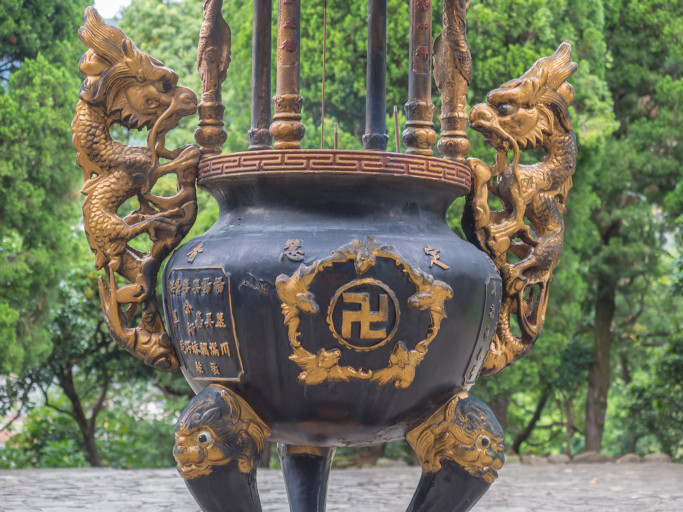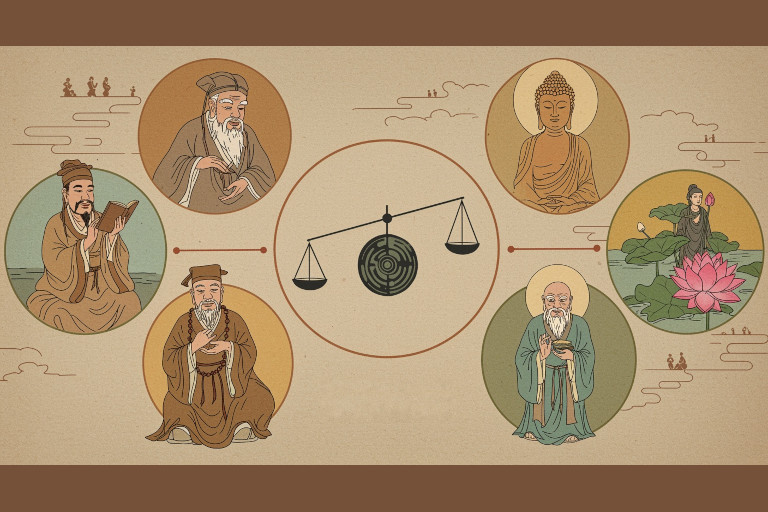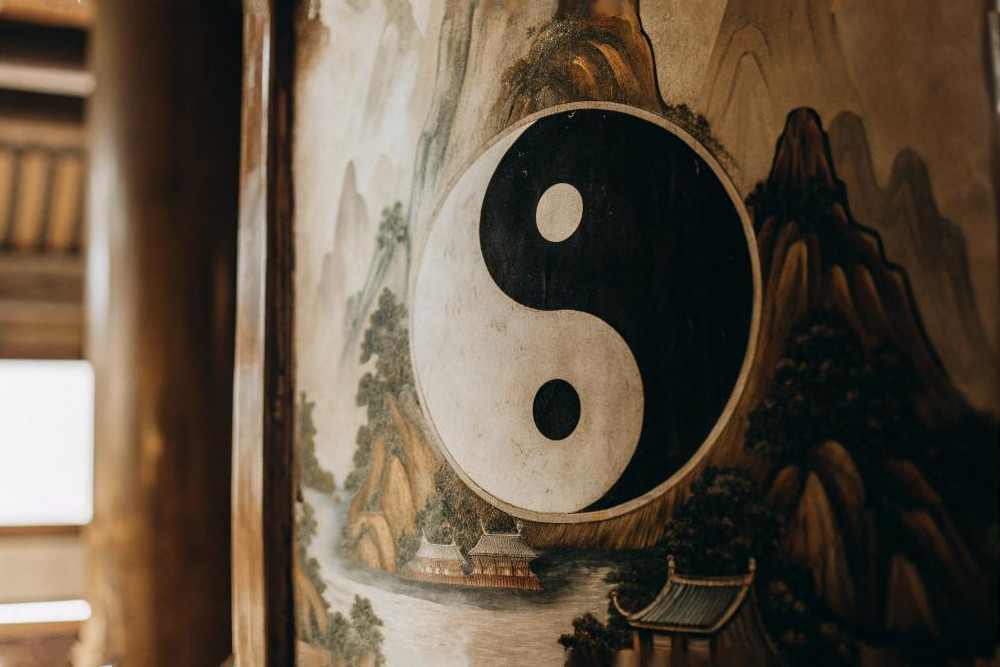The familiar black and white Taiji symbol, often seen in martial arts and traditional Chinese culture, is far more than a decorative design. It represents one of the core ideas of Taoist philosophy: the balance and interplay of two opposing forces — Yin and Yang. In this symbol, black represents Yin and white represents Yang, and together, they convey the essence of the Tao, or the Way.
The Taiji symbol’s distinctive shape, with two interlocking halves curling into each other, shows that Yin and Yang are not only opposites but also contain the seed of each other. Each side holds a small dot of the other color, suggesting that within Yin there is always a bit of Yang, and vice versa. The concept of duality within unity lies at the heart of how Taoism perceives the universe.
A symbol with ancient and global roots
Archaeologists have been surprised to find symbols resembling the Taiji diagram — and the ancient wàn (卍) motif — on artifacts from various prehistoric cultures across the globe. While these symbols may not have carried the exact same meaning in every context, many scholars see them as signs of shared spiritual insight among early civilizations.
In Eastern traditions, for millennia before the 20th century, the wàn (卍) symbol has been revered as a sacred sign. Originating from the Sanskrit svastika, meaning “well-being” or “good fortune,” it often represents eternity, balance, or divine presence. The discovery of these ubiquitous motifs in ancient artifacts has led some researchers to speculate that such symbols could be traces left by enlightened beings who once walked the Earth.

Everything has Yin and Yang
In Taoist thought, all things in the universe can be understood through the lens of Yin and Yang. If we imagine the Taiji symbol as representing a planet, a galaxy, or even a single life, it illustrates that everything is made up of these two opposing qualities. Day and night, sun and moon, male and female, hot and cold, up and down — all are reflections of this cosmic duality.
Even the most ordinary things can be divided in this way. In ancient Chinese numerology, even numbers were considered Yin, and odd numbers were considered Yang. In essence, Yin and Yang are not moral judgments but abstract attributes used to describe the natural order. Yin is associated with the passive, dark, or hidden, while Yang is linked to the active, bright, or visible. Together, they form a dynamic balance that underlies all existence.
What does “Taiji” really mean?
The word “Tai” means “great” or “supreme,” and “Ji” refers to the “ultimate” or the “extreme.” Together, “Taiji” refers to the “Supreme Ultimate” — a concept that describes the most fundamental level of the universe, where all things originate. At this high level, all phenomena are expressed through the interplay of Yin and Yang. The Taiji symbol serves as a visual representation of this profound idea.
A guide to morality and spiritual discernment
Beyond its cosmological meaning, the concept of Yin and Yang also plays a role in how Taoism — and traditional Chinese thought more broadly — views human behavior. Over time, cultural interpretations assigned moral values to these qualities: Yin came to represent the negative, dark, or harmful, while Yang symbolized the positive, bright, or virtuous. In this framework, people, actions, and events can be seen as either righteous or unrighteous, good or evil.
This approach aligns with other major schools of Chinese philosophy. Confucianism emphasizes distinguishing between good and bad people based on virtue and conduct, while Buddhism focuses on discerning good from evil as part of karmic development. Though the language and emphasis differ, all three traditions share the belief that moral discernment is vital for a well-functioning society and a meaningful life.

Moral clarity in times of crisis
Why is it so important to make distinctions between good and evil, right and wrong? One answer lies in the role such discernment plays in preserving social harmony. Promoting virtue and suppressing wrongdoing helps maintain order and balance — much like Yin and Yang must remain in harmony within the universe.
From a spiritual perspective, this distinction may serve an even deeper purpose. In Taoist teachings, there is the concept of the “end of dharma,” or the decline of moral order at the end of a civilization’s cycle. At such times, the division between good and evil becomes essential — not just for society’s survival, but for personal salvation.
To illustrate this idea, consider a familiar story from Western tradition: Noah’s Ark. According to the Bible, Noah and his family were considered righteous and thus spared from the great flood. This tale conveys a universal theme: when catastrophe strikes, those who have lived morally upright lives may be protected, while those who have embraced evil may be swept away.
In this view, the rise and fall of civilizations can be seen as a process of spiritual purification — where good is preserved and evil eliminated. According to Taoist thought, the balance of Yin and Yang is not just a cosmic principle, but a guide for humanity’s survival, reminding us that in times of great upheaval, virtue may be the key to enduring.
Translated by Patty Zhang
Follow us on X, Facebook, or Pinterest

